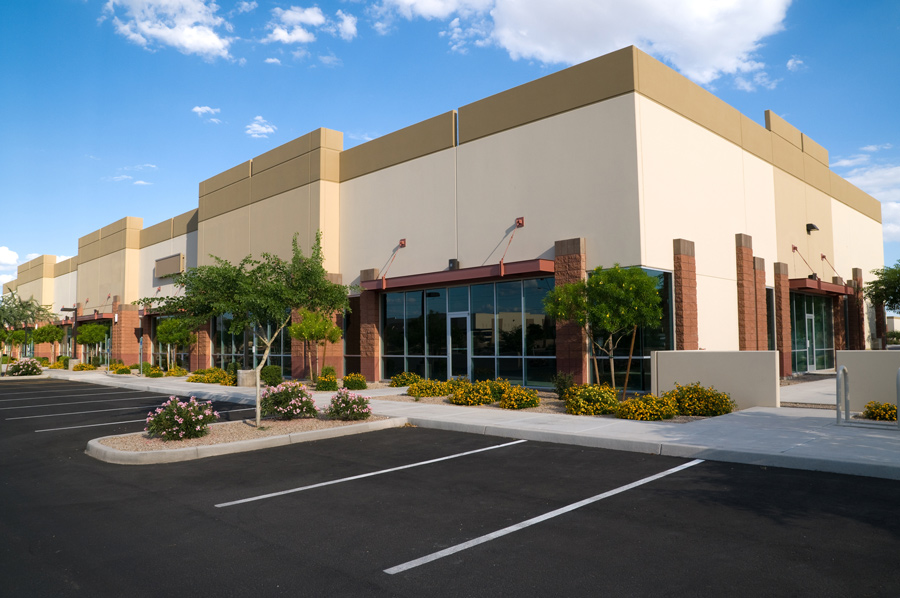Once one of the largest shopping centers in Tennessee, One Hundred Oaks in Nashville faced a prolonged downward spiral. Like many malls, it enjoyed success as a thriving urban shopping hub with nearly 900,000 square feet of retail space. However, the story of One Hundred Oaks mirrors a broader trend seen across America, where malls struggle and eventually succumb to closure due to changing consumer preferences, community migration, and the rise of e-commerce.
Nearly half of the former mall’s property is dedicated to Vanderbilt University Medical Center’s clinical and administrative support operations with 22 specialty clinics, a pharmacy, imaging center, and laboratory.
The opportunity came at a time when Vanderbilt University Medical Center needed to expand its services to keep up with patient demand. Despite the unconventional nature of the location at the time, the transformation of the One Hundred Oaks site made sense. It was just four miles away from downtown Nashville—creating a medical space at a time when there was a demand for accessible health care.
With an aging Boomer population, increased healthcare demands and shifting consumer preferences, it’s no surprise that repurposing retail space has become a strategic necessity. It has created a dynamic landscape that continues to evolve as both the health care and retail industries face unique challenges.

Meet Medtail
Referred to as “Medtail,” this transformation within retail stems from healthcare tenants moving away from expansive hospitals and independent structures to more accessible locations to deliver in-person services that cannot be accessed through online platforms.
And these healthcare services aren’t only the vision centers, dental clinics, or urgent care facilities you typically see occupying former malls, strip malls, and other commercial spaces. Health and wellness providers of all kinds—therapists, sleep clinics, dermatology centers, and even university medical systems, as we’ve learned—are playing a pivotal role in revolutionizing the healthcare real estate sector.
Today, major healthcare systems, including the University of Rochester, are embracing this trend. The university constructed a 350,000-square-foot ambulatory orthopedic facility at The Marketplace Mall site in Henrietta, New York. The $227 million project—the largest offsite project the university has ever undertaken—will include an outpatient surgery center and a physical therapy space.
Similarly to the former One Hundred Oaks space, the University of Rochester project is an example of how new life can be breathed into an unoccupied retail space—the outpatient surgical center is a former Sears store—by converting it into a space that meets the country’s growing demand for more healthcare infrastructure.
At a time when a healthcare worker shortage and endemic COVID-19 are making the outlook of the healthcare industry less clear, one trend is evident: There is a dire need for more healthcare infrastructure. And that infrastructure may look different than expected, but it’s transforming the way we access medical care.
The Face of Medtail
Successful Medtail businesses have a keen awareness of the demand for accessible healthcare solutions. These setups strategically position healthcare services in high-traffic areas, making medical attention conveniently available where people already frequent, redefining the accessibility and approachability of healthcare.
A Tether Advisors survey found that nearly 80% of private equity, commercial real estate, and retail healthcare respondents believe Medtail investment will increase. You don’t have to look far to see proof.
- VillageMD and Walgreens are opening of nearly 600+ full-services doctors’ offices. The clinics, located inside Walgreens pharmacy locations, will staff more than 3,600 primary care providers. The company says at least half the locations will be in medically underserved areas.
- In Winona, Minnesota, a once vacant Kmart now serves as a primary care clinic for Gundersen Health System. Vacant since 2014, the building now houses several medical specialty offices, including family and internal medicine, pediatrics, women’s health, imaging services, occupational therapy, and an eye clinic.
- About four hours north in Duluth, Minnesota, developer Kraus-Anderson converted a former Younkers department store into an adult and pediatric therapy facility for Essentia Health. The 45,000-square-foot facility includes gym spaces, treatment rooms, and spaces for rehabilitation psychology and support groups.
- After an economic downturn during the pandemic, the Good ‘N Plenty restaurant closed in Lancaster County, Pennsylvania. Well Spring Care Inc. purchased the 8.5-acre property in 2022 to convert the structure into a 24/7 medical clinic for the Amish community.
Research shows that nearly 20% of retail space is now leased by medical providers, up from 16% in 2010, and it shows no signs of stopping.

What’s Driving Medtail?
What’s behind this surge in utilizing retail space for medical services? One of the biggest key drivers is convenience.
While convenience may mean proximity to one consumer, it may mean avoiding enormous hospital campuses to another. A vast majority of hospital and health systems say they expect a continued increase in outpatient volumes through this year and beyond. In fact, 95% of health leaders surveyed in the Guidehouse and Healthcare Financial Management Association report say outpatient volumes will increase this year alone, and 40% expect jumps of 10% or more.
While many patients may prefer to bypass navigating through complex facilities to find a physician or healthcare specialist, these statistics also beg the question: Is there even enough room at current healthcare facilities to accommodate rising patient numbers?
Small communities in remote areas also once had little access to medical facilities, with patients forced to drive dozens of miles to see a specialist. With Medtail’s rise, rural patients are now seeing more options available to them.
There has also been a shift in how healthcare has embraced preventative wellness, recognizing the importance of proactive measures and offering services that empower individuals to maintain their health and well-being before issues arise.
Look no further than Dollar General to illustrate this transformation. Not to be left in the dust by Medtail leaders Amazon, CVS, Walmart and Best Buy, the discount retailer created a healthcare advisory panel to assess opportunities in Medtail and healthcare under its DG Wellbeing brand.
Earlier this year, Dollar General began teaming up with DocGo, a mobile health and transportation service provider, to pilot three mobile health clinics. Large vans in three Tennessee store parking lots now offer customers basic, preventive, and urgent care services, as well as lab testing to reach underserved populations in high-traffic areas.

Malls experienced among the highest vacancy rates in the fourth quarter of 2022, with an average rate of 8.7%. General retail locations fared much better at just 2.5%. The number of empty office buildings looked even more bleak, with a record 963 million square feet of office space unoccupied in the United States at the end of the first quarter of 2023.
Commercial leasing agents may feel like they have their work cut out for them. Yet reusing underutilized retail space offers a glimmer of hope and opportunity in these changing times. Opening retail spaces to health and wellness businesses can not only bring new life to empty storefronts while also tapping into the growing demand for accessible medical services.


